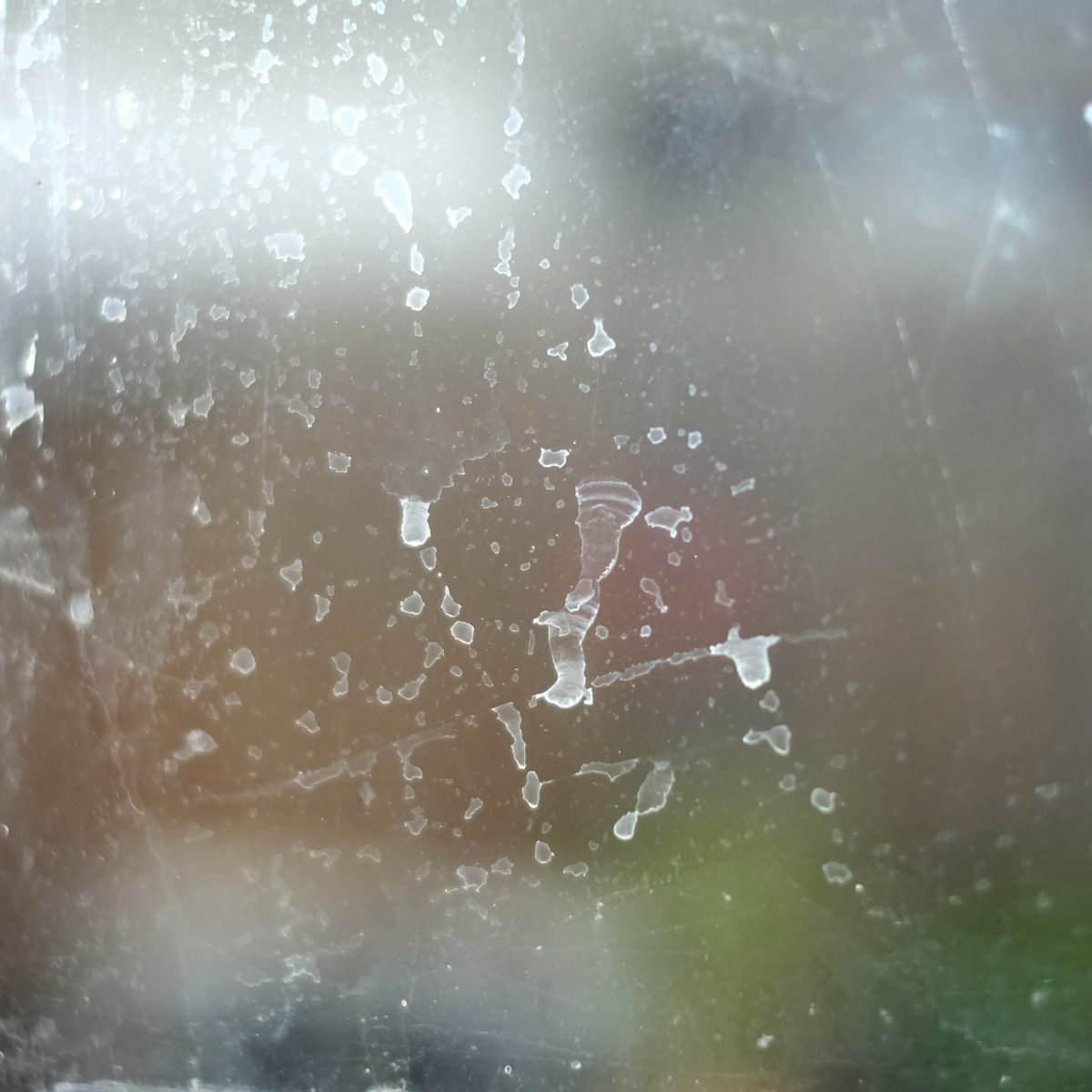coming soon : FOIL VOID JOIN AVOID :
Aposiopèse : Jan 26
physical 2CD pre-order bandcamp.com/album/foil-void-join-avoid
digital pre-order Sonic Rubbish
physical 2CD pre-order bandcamp.com/album/foil-void-join-avoid
digital pre-order Sonic Rubbish


material studies #2 + #3
digital release: Sonic Rubbish : 2023
Material Studies #2+#3 are not intended as a documents of objects and their interactions, but result from working with these assembled situations and the resulting recordings as material, to listen for what might be shaped through these generative processes.
recorded 2019. arranged 2020-21. re-arranged 2023.

CRAWLSPACE : David Precott-Steed + Eamon Sprod
Unfathomless : 2023
Crawlspace developed as a dialogue between ourselves, as well as between us and Bell Stairs. The physicality of the space shaped our movements within it; how we moved through the space impacted upon what was heard and how we listened. This informed what additional sounds we introduced and how we introduced them, which in turn shaped our movements … and so on.
The recorded traces of this process have been arranged to reflect some of these spatial conversations, comprising clusters of activity interspersed by the sound of the distant water, the traffic above our heads or a single drip drawing us on further down the tunnel. You can hear our movement through the darkness, and the sounds of our somewhat futile attempts to coax Bell Stairs to answer back.

ROOMS
F E R N S recordings : 2022
Shaped from various recordings of installations and spatial works presented over 2019-21 ... however ROOMS is not intended to act as a straight document of these installations. Rather, it explores some of the ideas and methods which emerged from the process, within the space formed by a pair of stereo speakers situated in yet another room."Recorded audio material is explored as a shifting series of perceivable surfaces, textures and depths; traces of places and actions; points in space; vibration of speaker cone and microphone diaphragm; resonant objects acting as small sounding containers within larger containers; movements of air; a constant shifting set of perspectives; the traces that are left behind; debris gathered up and pawed over. Recorded sound is gathered and understood as partial, fragmentary, incomplete."
Think of this as a large empty house with many rooms and a lot of debris. You wander through the rubble and dirt and create sounds; until you realize that far away, in different rooms, other people are doing the same. Not in a scary way, for once, but as in a symphony for an empty house.
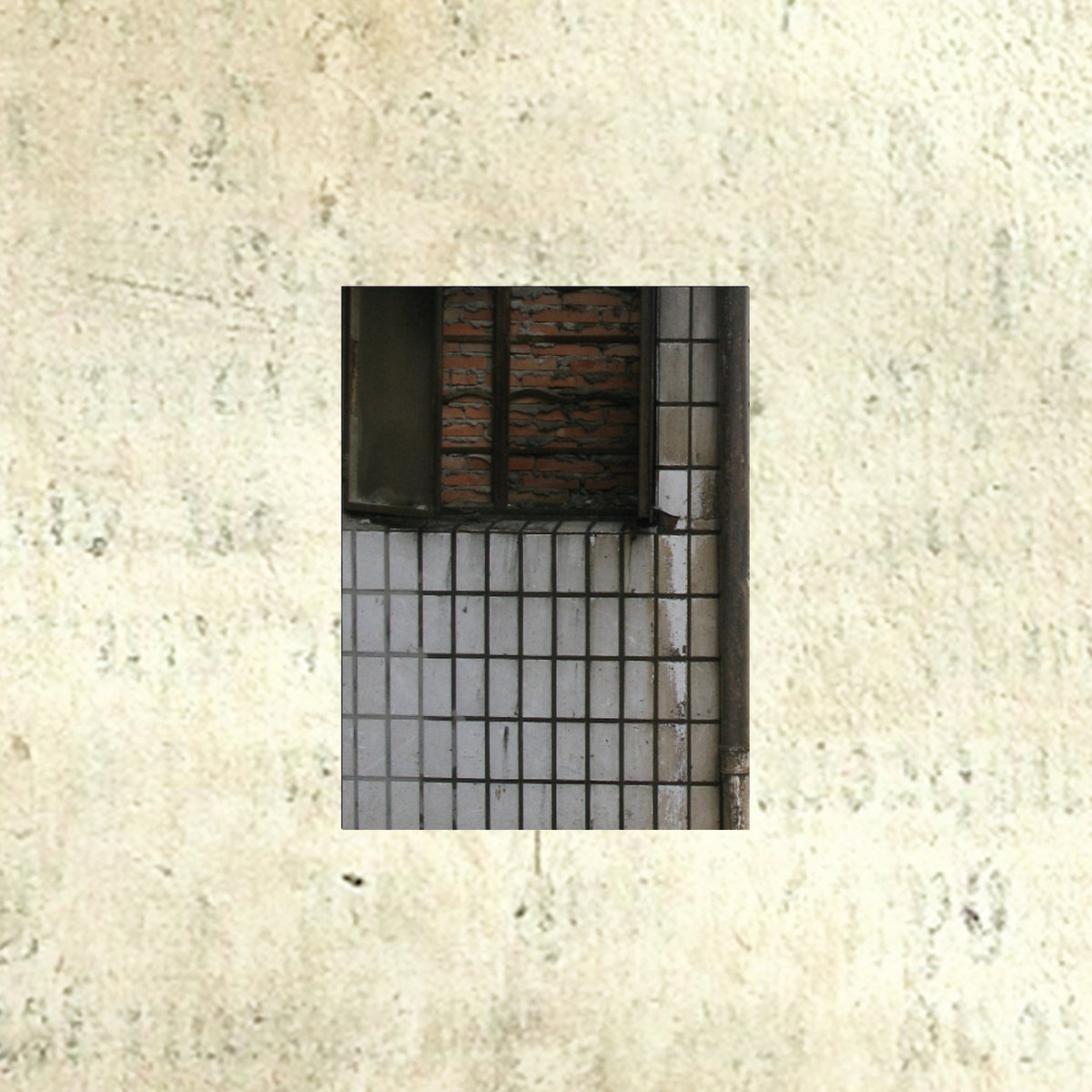
material studies #2
taâlem : 2022
Recorded 2019. Arranged 2020-21. Master: Yvan Etienne.
Material Studies #2 is the continuation of a small series of explorations of working with simple materials, started with 2019’s MS#1 released on Hemisphäreの空虚. This work pares back and further refines this process, with the use of minimal discarded everyday materials introduced to the artificial movement of air, via an air-conditioning unit. This work is not intended as a document of this interaction, but is the result of working with this situation and the resulting recordings as material, to see and hear what might emerge from that process.

HOLES
Sonicrubbish : 2021
Trying to peg the “things that happened” to generate these sounds is foolish. Tarab is skilled at capturing rich, detailed sonic events and parsing them down to just their most essential elements. But the title, “Holes”, does a lot of work in setting up the piece. On this album, sounds are separated into discrete clusters. Quick jabs of metal rattling, open-air, doors closing and machine grind are distilled to a seconds-long (or shorter!) rush, separated by pregnant silences. We can hear jumbles of metal bashing, or the seemingly random percussion of an auto repair shop, fiercely jumbled television announcers… sharing a thin border with closely-recorded footfalls, gale-force wind, an empty foyer. Sprod plays with volume mercilessly and often; a sound-event might be REAL LOUD AND UPFRONT as if it’s boxing you about the ears, then rapidly cut to the same sound but quiet and distant, then cut again to a sideways view of the same sound, all in a moment with silence on either end… one gesture describing decisive motion. I’m reminded of Fergus Kelly’s work crossed with Runzelstirn & Gurgelstock’s violent focus… the ears of a documentary filmmaker on the body of a martial arts expert. The title seems to refer to the open space that gapes around each event… and sometimes, around each individual sound. This music breathes like a living animal.
41 Containers
AMPLIFY 2020 : Quarantine
Work for AMPLIFY 2020 : Quarantine online festival. Curated by Jon Abbey, Vanessa Rossetto and Matthew Revert.
All sounds collected, arranged and re-arranged 26 March-25 April 2020: rooms, inhabitants, contents, external activity, speakers, microphones.
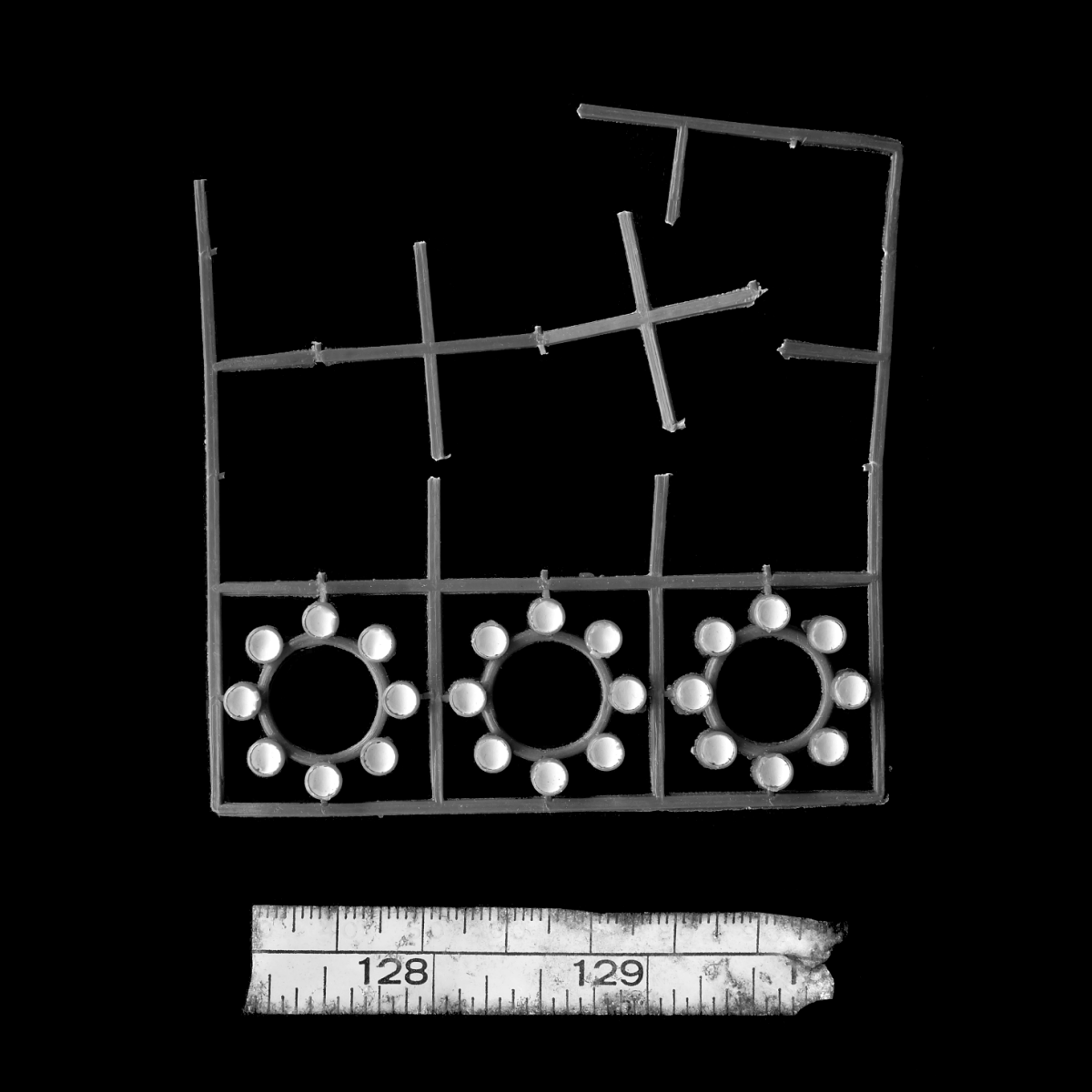
APOPHENIA
Sonicrubbish : 2020
The temptation for a listener is to match sounds to their source and attempt to read meaning there. But Sprod makes it clear in the title that such an interpretation would have as much validity as finding images in clouds or constellations. So never mind the suggestive litany of source sounds provided by the artist: bicarb soda, air conditioning units, escalators, floorboards and so on. Instead, let’s talk about the industrial immensity and finely controlled drama of the piece. The music seems endlessly detailed, both legible and obscured at the same time, with a stellar control of tension.
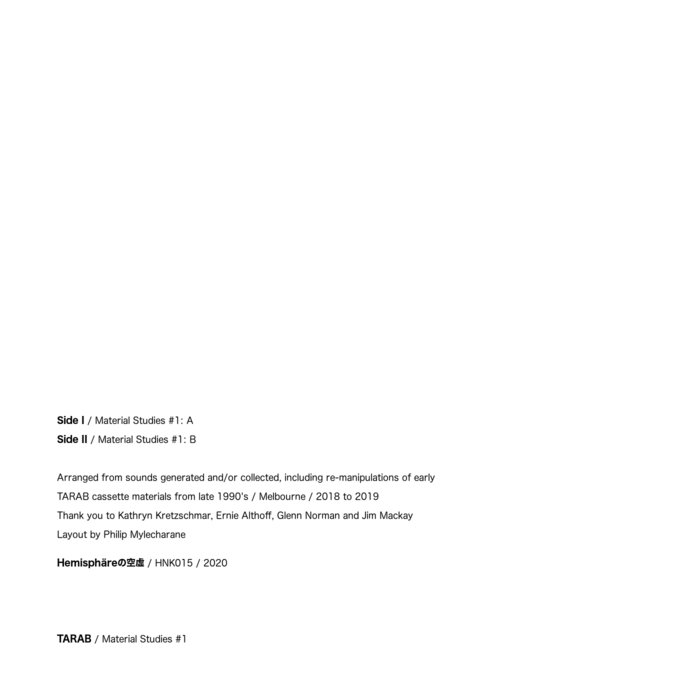
Material Studies #1
Hemisphäreの空虚
: 2020
“... the identities of Sprod’s surroundings are not made nearly as clear; we are told that some of the elements are sourced from old cassettes from the project’s early days, but other than that the “materials” he utilizes are quite wide-ranging—metallic machinery that resembles recordings I myself once captured of children’s playground equipment, small vibrating objects on agitated surfaces, Velcro-like scrapes and scratches. The exhumed tape remnants add a crucial dimension to the music, unseating the clearly and closely recorded tactile events with a cloying layer of ghostly hiss and hum. There’s a particularly strong stretch near the beginning of side B where heavily processed micro-sounds flit and crackle around droning, soupy clatter, the former almost resembling the hyperactive granular textures of pure data synthesis. Material Studies #1 is essential listening for all those who love to turn their ears to immersive, textural sonic landscapes that refuse to abandon their gritty, earthly origins.”

Bidödaren : Various Artists
FERNS : 2019
"Bidödaren = Beekiller, approximately... In Swedish there is a double meaning; bi is the insect bee (in English), but also has the meaning of something like a "side-effect". Like if the killing of bees is just something being done beside doing something else. (Leif Elggren)"
Compilation featuring Daniel Menche, Steve Roden, Joe Colley, BJ Nilsen, Toy Bizarre, Small Cruel Party, Unken Reflex and Tarab. Responding to a draw by Leif Elggren.
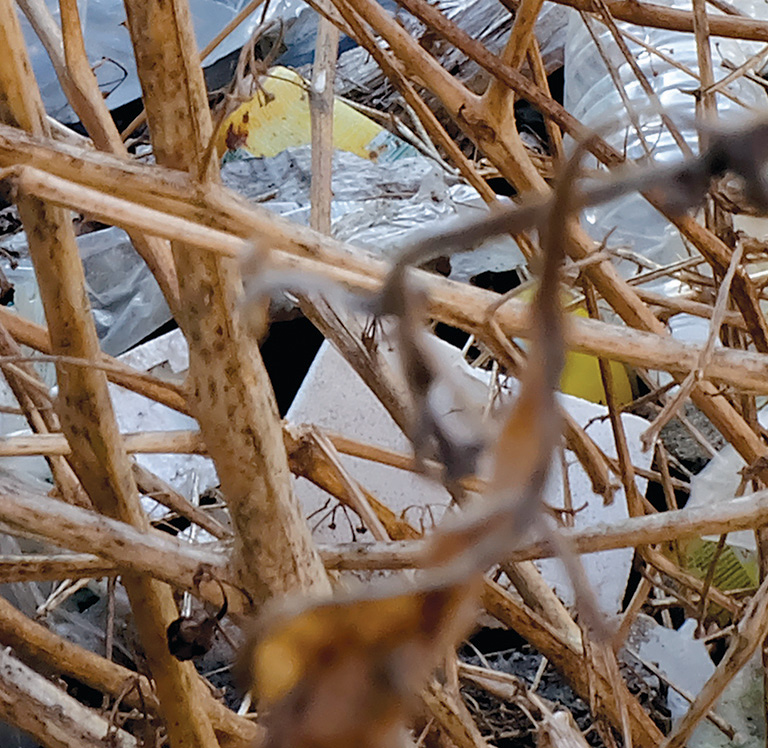
Friche : Transition : Eric La Casa + Eamon Sprod
Swarming : 2019
To listen to this all the way through is wonderfully unnerving; just when you’re lulled by the static metallic rumble, sharp cuts and clanks leap across the stereo field and jolt out in sharp-angled jump-scares. Listening to a big city from its ignored edges means capturing the menacing acoustics of tunnels, the drone of distant traffic and faraway voices, active trash-heap clatter, threatening low-frequency drops, oncoming trains, cell phone interference. The lengthiest section, part 3, bashes rocks around at a steadily rolling density while skittering plastic and water
attack from all sides until flurries of activity in discrete channels give an impression of overwhelming movement that constantly speeds up, stops, switches to something entirely different… bends plastic in your ear then throws you down a well, only to instantly teleport you to the centre of an auto scrap yard and then plunge you back underground. So much is happening each second that a single listen doesn’t do it justice. I’ve experienced “Friche: Transition” intently
all the way through on headphones about six times so far, and have come away with latching on to new details each time. This album is exhilarating and thrillingly exhausting.
Available direct from Swarming here

HOUSEKEEPING : SONIC RUBBISH : 2018
This is music that delights in subverting expectations over and over again. The dull drone of people in a reverberant hallway settles into a lull for just long enough to make the punctuating slam of ear-boxing trash hilariously startling. Doors shut, the wind sings, motors whine… a distant murmur comes slowly into focus and then suddenly runs straight at the listener...... Somehow, the three-dimensional character of the multi-channel installation is preserved on this stereo composition. All the junk swirling inside “Housekeeping” seems so tactile that at one point I had to take my headphones off to make sure something hadn’t fallen off a shelf in my living room.
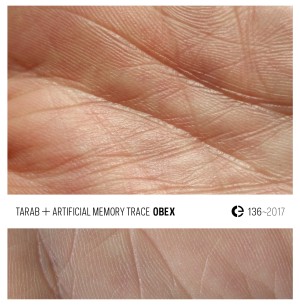
OBEX : Tarab + Artificial Memory Trace :
Crónica : 2018
"...sometimes it builds, but as easily seems to be falling apart making this quite odd but thoroughly captivating stuff. "
How seriously should it be taken? Probably quite seriously. Nothing about Obex intimates an explicitly light-hearted release, an album geared towards ‘fun’. And yet amidst the dark, ponderous clanks and rumbles, something about Obex suggests an entertaining aspect, and also hints that this is art for the love of art over and above any grander narrative. And, context / no context, this is an interesting, textured work, rich in texture and dynamics.
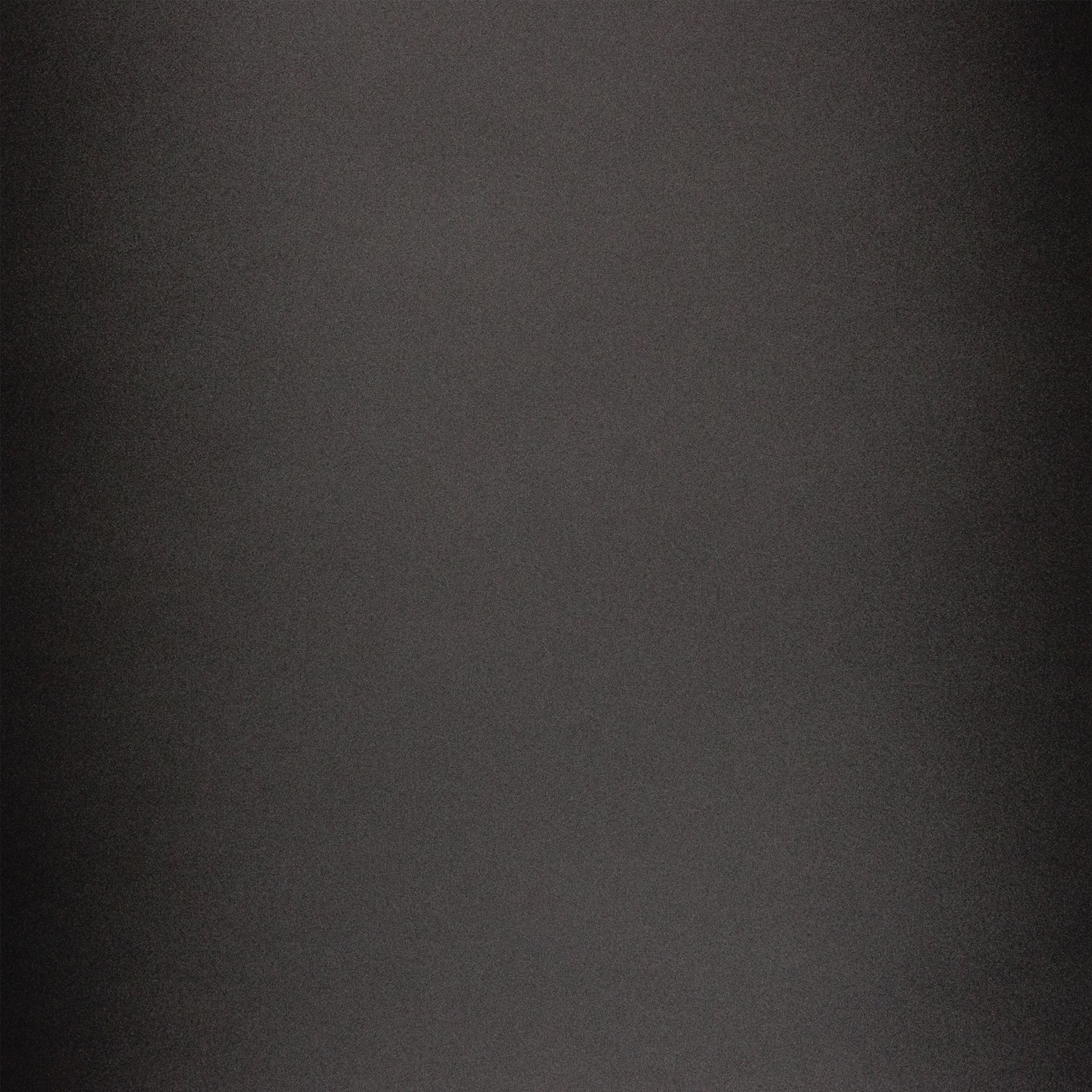
An incomplete yet fixed idea : Aposiopèse : 2017
Released on a vinyl divided into two 20 minutes parts, An Incomplete Yet Fixed Idea is the last work of Eamon Sprod, aka Tarab, an unconventional musician from Melbourne, familiar with field recordings, electronic frequencies, sound landscapes and site-specific research. The album was also recorded by Giuseppe Ielasi, an Italian sound artist well known in the contemporary experimental musical “free zones”. Many authors who share the same creative and productive process of the Australian artist have made some quietist and aesthetic works, but in his case the creation process moves in a different direction, a solid conceptual strain based on a personal poetics of waste, decay and re-contextualising of single sound elements, something more complicated than an exhibition of distinct frameworks. According to the artist, the reactive mixes are “careful arrangements of sonic rubbish”, mostly undefined, whose origins are not revealed. There is no research, nor is there an attempt to soften the raw audio captures. So, the limit between the recorded and the manipulated sounds is uncertain, the listener’s perception walks on difficult ground searching for some fixed point. Nothing seems immediately clear. In the first part the sequences are more dilated and abrasive, with a growing development in pattern and intensity. The following sections show some anxiety made of industrial elements: metal audio emergencies, threatening loops, amplifications of sounds made with items, movements and crushes. The incompleteness here isn’t just escaping from the imitation of nature or avoiding a partial representation. The work doesn’t either support the idea that beauty is something already codified. Here we find the experimentation of a critical threshold, a critical point in the system where some lack of perception can surprisingly sharpen the capability to feel ourselves at one with the sounds and with the intimate structures of the vibe effects. So the incompleteness becomes a privilege, because it shows the potential to find relief with the development of new relationships between the sensory forms and the effective artistic practices.

Kom-pohst
:
Eamon Sprod John Grzinich Simon Whetham : 2016
Kompohst is a collaborative work for radio in three parts that has been created from a mass of sonic material gathered by sixteen artists involvement in Active Crossover: Mooste, a collective residency held during April-May 2015.
Three composers, John Grzinich, Simon Whetham and Eamon Sprod, have charted connections between the artists' activities, intersected the common threads, and assembled them as a web of sonic interactions and experiences.
The notion of compost sits at the heart of the three works, conjuring ideas of decomposition and recomposition, and sound making as a material form and a living process.
The composting of these artefacts embraces a metaphorical transformation of debris, giving a voice to a unique collective archive, and presenting a set of sonic interpretations from the process of investigation and collaboration, of sharing experience and materials.
The work was commissioned by ABC RN’s Creative Audio Unit for Soundproof (a program which is now sadly no longer with us). Thank you Miyuki Jokiranta.
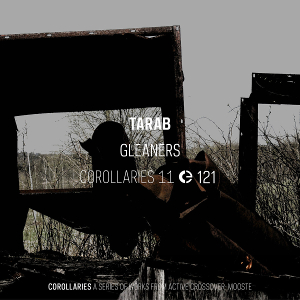
Gleaners : Cronica : 2016
Gleaners rummages through the Active Crossover: Mooste archive, gathering together the vestiges of our collective and disparate scurryings around the landscape. By allowing the background to almost free itself from the foreground and refusing to differentiate between incident, accident and intent, the various fragments have coalesced (with furtive guidance) into a form (in)determined by which of the residual pieces settled, and where they landed; and which pieces simply disappeared. All sounds have been extracted from recordings by or featuring: Tuulikki Bartosik, Fernando Godoy, Evelyn Grzinich, John Grzinich, Jim Haynes, Park Jin-Young, Rostislav Rekuta, Yiorgis Sakellariou, Dawn Scarfe, Maksims Shentelevs, Eamon Sprod, Taavi Suisalu, Arlene Tucker, Simon Whetham, James Wyness.
idée fixe : nonlinear : 2016
idée fixe has been arranged from a collection of recordings gathered from various locations and situations that I have found myself in over the last handful of years. Where and how is not so important in this case. This current arrangement has mutated from an installation, which germinated in various recent live performances, which sourced their material from multiple projects and situations. So this material has been added to, subtracted from, rearranged and generally mistreated many times before it has reached this current form. Some of it will continue to be pushed and pulled around some more. I won't be able to help myself......

I'm Lost : 23five : 2014
This album is comprised of field recordings, but don't expect to hear field recordings; they've been chopped up, rearranged, amplified, and skipped like flat stones across a glass surface. At one point the speakers spew the ugly sound of a busted CD; anyone who knows this sound will rush for the remote. And yet, everything is intentional: the glitch, the fuzz, the squelch, the sonic debris. Tarab's intention is to decontextualize and disorient, and he does so here in spectacular fashion. When one hears the sounds of birds and running water, one thinks, "how lovely!" Not in this context, in which they are surrounded by harsh drone and over-amped rustle. That's just in the first minute. The impression is that of an exploding car driving through a factory. On this album, the artist (Eamon Sprod) elaborates on themes last explored on Strata, including broken objects and the immunizing effect of mass transit. The words I'm Lostcan indicate a number of things: that one is physically lost, emotionally lost, spiritually lost. By removing the normal signposts from his soundscapes, Tarab dares his listeners to find the port in his sonic storm. Fortunately, the human mind is so good at finding patterns that it tends to impose them even where they don't exist. For example, the wind of the second track may be intuited as a chorus, or the entire album as a buildup to breakdown. The more one listens, the more one begins to hear repetitions: there's that bird again, there's that running water again. Either one is going in circles, or one has just found one's way. The album shares the appeal of early industrial music. At times it sounds as if Tarab has killed and gutted a metal turkey, stuffed it with sprockets and gears and thrown it against a wall. The music is dangerous in all the right ways. Save for that intentional CD glitch at the end of track four, it's also quite beautiful. This adjective may fly in the face of all that Tarab is trying to achieve, but as much as he may wish the album to serve as a commentary on humanity's "dead ends", these are the sort of mistakes most listeners will want to hear again, perhaps reveling in the very idea of failure. We may continue to colonize, desecrate and pillage, to the extent that birdsong and running water become only footnotes in our sonic landscape; but the metallic and emotionless possess their own peculiar allure. --
Richard Allen - A Closer Listen June 2014

Strata : Unfathomless : 2013
Eamon Sprod records music in the field, but don't mistake the product of his labor for a field recording. In some hands microphones and tapes are used to capture the buzz of insects or the sound of rain pelting the land—whatever the subject might be—with the intent of faithfully reproducing those sounds later in a living room or in a pair of headphones. Replication is the documentarian's craft. Sprod's is magnification. He singles out particular noises, brushes them off and, like a geologist or an archaeologist, excavates them from the sediment of ordinary commotion. His efforts yield an enlarged world of microscopic rhythms and porous surfaces, small remnants that point to the unbroken environments from which they were culled. But Sprod re-purposes those extractions as musical vehicles too, for both re-hearing and re-imagining the world. Strata is a telling title. Maybe the perfect title for this album, because, in order to get what he wants, Sprod has to dig into the dirt. He trains his microphones on the gritty crunch of busted concrete and loose gravel, buries them in the ground to pick up the vibrations of subway trains, and lets them loose over a wide surface where dogs bark and the hum of cars, planes, and other machines mingle chaotically. Most public spaces are filled with sounds like these, but they pass by unnoticed for a variety of reasons: visual distractions pull our attention away from them or other sounds roar rudely into our ears masking the quieter noises that smolder in the dark. Some sounds require special equipment to hear and other times there is simply too much happening to catch it all at once. Whatever the case, our senses fail to report the entire scene. Sprod's method of recording and composing brings those silenced sounds back to consciousness, with a twist.
They arrive incrementally and without context, fragments of the vacant lots Sprod recorded near Macaulay Station and Moonee Ponds Creek in North Melbourne, Australia. From the piston-pumping whoosh of car engines on a raised highway to the sibilant hiss of old pipes; from birds chirping to creaking boards, to tape distortion and the harmonic ring of metal on metal, each scene appears out of the blue, placed shoulder to shoulder with its neighbors by means of sudden cuts, quick fades, and clever mixing. Rhythm and pace take precedent over the sounds themselves as Sprod turns his attention from subject to subject. A barrage of noise is followed by an expectant stillness. Dogs bark. Someone kicks a pile of rubble over with their boots and subtle effects creep surreptitiously into their midst. In places the recordings are slowed down or sped up, or are manipulated in some way to add variety.
Strategies like these might have come about as Strata took shape, or they could have been planned out in advance. The blueprint suggested by the title shows through in the way Sprod organizes his sources, but nothing like a composition can be gleaned from that organization. In absence of an outline, it’s very likely that each sequence and edit was decided by the material itself and by Sprod’s ear. There is a peak here and valley there not because of any guiding principle or master plan, but because that sequence seemed appropriate at the time and made for good music. Thoroughness might also have contributed to the album's build, as Strata uses much of its time to focus our attention on overlooked (or under-heard) phenomena. Events move through the frame only after they've been treated meticulously and no sooner. What counts as meticulous depends entirely on interest, and since this is Sprod's record, it's his interests that matters.
By intuition or by whim, Strata takes shape. And from that shape both music a deepened field materialize. All the nooks and crannies usually obscured by the bigger picture come to the fore, as if blown up under a microscope, and they bring two of North Melbourne's deserted locales back to life with them. Not just by virtue of their sounds; the music reaches further than that. It travels through the audible frequencies and into the brain where it teases the imagination to work. An awareness of how these places must have felt emerges. It's a subjective report, filtered through Eamon Sprod's subjective lense, but it captures the lay of the land in a way that few documentary recordings could.

Shards of Splinters-Fragments of Scratches /Killustiku Killud-Kriimude Killud
: Semperflorens : 2012
Too long has passed since we've heard anything new from Tarab - the solo project of Australian sound artist Eamon Sprod. His process involves the recontextualization of field recordings into dense collages of acoustic noise, natural disruptions, violent crackling, and grandiose crescendos of activity bracketed by periods of a unsettled calm. In listening to each of his records, we can easily see how much time and attention he puts into these increasingly complex compositions; so it's no wonder it can take two to three years for a new album to emerge. Sprod collected all of the sounds for Shards Of Splinters while on a month-long residency at MoKS in Estonia. He purposefully chose to go to Estonia in the middle of a very cold, very bleak Baltic winter, in stark contrast to the fire-season and sweltering temperatures he would have found at the same time in his native Australia. As with his small back catalogue, Shards Of Splinters navigates along the boundary between the natural and the industrial - where factories had been left to collapse and to be consumed by vegetation, where tin sheds were torn asunder by hurricane force winds, where rusted pipes eerily resonate chorale drones from unseen cisterns deep under the surface of the earth. Many a field recordist and sound ecologist uses this boundary space to collect a beguiling array of recordings, but Sprod focuses almost entirely on mapping an apocalyptic poetry through his profoundly broken sounds. The unforgiving cold of the Estonian winter threads his recordings of slushing ice, crumbled concrete, and scraped metal that he deftly arranges into ruptures and disturbances that churn through tactile squeaks and metallic vibrations. There is a violence front and center in Sprod's work as if he's forecast the globe itself waking from hibernation to exterminate humanity once and for all. Aesthetically, Shards Of Splinters finds common ground with Eric La Casa or the more narrative work of Chris Watson; but conceptually, Sprod takes a much darker approach akin to Small Cruel Party or G*Park, that gives his recordings a magnificent depth. Brilliant.
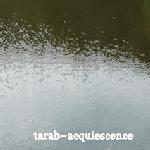
acquiescence : Kaon : 2011
Tarab has a confrontational way of laying out sounds, breaking up the barriers of comfort & ease, strict linearity, as well as fixed space & time parameters…Most of the time, his ethic is of keeping sounds as pure as possible…piecing them together often in a digressive manner so that they become the foundation of an original journey…“Acquiescence” on the ever fascinating “La Rivière” series on Kaon (now in its third year) is mainly based, as all previous “episodes” on recordings by Cédric Peyronnet in the French Taurion river valley. Being no exception in Tarab’s course, this is another rough manifesto of on the edge listening…Splitting his EP in 3 parts (acqu, iesc, ence) and adding sound materials from Merri Creek, North Coburg, Australia, Tarab gives evidence that he enjoys to have a real grip on things, and a concrete genesis for its own compositions… this indigenous, subtle mixed in contribution is essentially a way of anchoring the experience in a personal terrain, and remains unobtrusive, melted within…The three movements have a shifting morphology, presenting multiple entry/exit points, but most of all, they’re an open invite to an intense quasi physical grasping…summoning up our own long buried stimuli & sound memories, Eamon immerses us in the liquid element with an obvious jubilatoire desire to exacerbate, intensify our sensory capital, largely enhancing the tissue of possible connections…it’s as if, bathing us in the water, he makes us perceive, groping all along, the real shapes & contour of stones, their texture, but at the same time, all the floating & suspended debris & alien bodies, as well as the immediate surroundings…One texture calls for the other giving part after part an insight into an organic agglomerate of peculiar vibrations & frozen moments…subtly intertwined, all the components coalesce to give rise to new meanings, a kind of new story particular to each listener who is then taken along, facing improbable revelations…More than being just a erratic soundwalker, Eamon has a patient, focused, offbeat boosting perspective…he truly opens doors for us…
Daniel Crokaert, the field reporter

revenant: zeltini : Unfathomless : 2011
Revenant (I can’t help but think of some especially powerful and frightening figures from Doom) on this occasion, November 2008 in Latvia, consisted of Maksims Shentelevs, Eamon Sprod, John Grzinich, kaspars Kalninsh and Felicity Mangan (though Grzinich writes: “‘revenant is an ongoing project with open membership”). No instrumentation is mentioned and, further, there’s a notation on the sleeve stating, “Final piece edited from 4 synchronized binaural recordings”. Perhaps it’s the cover imagery, maybe the former-SSR setting, but it’s quite tempting to hear this dark, brooding music as inhabiting a Stalker-like environment. There’s an oppressiveness, a dank aspect wherein one thinks of cold, clammy surfaces, algae-covered wall, ancient heavy machinery. The two overriding sounds areas are a blurred, metallic kind of drone, as though there’s a sputtering engine at work somewhere down the dark corridor and the clanking of light metal objects, linked like chains, skittering across the foreground. Small rhythms emerge: soft-mallet taps with a vaguely gamelan feel, as though at least one of the devices lying around still functions. Some faint voices then, rather surprisingly, a jew’s harp, strumming away in a loose rhythm, verging on a melodic fragment, a hapless fellow traveler in the sewers. This continues for the final 10+ minutes of the work, some increasingly violent clatter alongside, until the sounds skid to a conclusion among the chirps of mechanical beetles and sloshing water. The work is almost static, in a sense, minor events drifting in and out of focus; again, one thinks of the lengthy water-covered floor shot of Tarkovsky, though the focus here isn’t quite so sharp.
Brian Olewnick, Just Outside

utility/Les vibrations dans la masse de son roulement
(split 3' with Eric La Casa) :
Compost and Height : 2009
Sprod seems to have recorded the numerous short bursts of sound that appear here from within utility holes (manholes in the UK) around Melbourne, Australia. I’m not sure how he did this really, whether he lowered a recorder into the holes as he found them, or whether he climbed in himself (I’m extra impressed if the latter is correct) but knowing this information the sounds in this piece become thoroughly fascinating, and the many different sounds here that suddenly cut in and out leave me curious as to what I am hearing… are the sounds of the city above, merely filtered through the resonant chamber of what must be a tight concrete tube, or do we hear something actually down the hole, something normally out of earshot? Sprod’s notes on the piece suggest that most often we hear the former, the sounds of traffic, human conversation, wind etc channelled through into the utility hole, but certainly here and there we get blasts of sounds like escaping gas and at one point some kind of warning alarm going off. Beyond the fascination that the different sounds provides for me, the way the pieces are structured keeps the listener on his/her toes. A murky, glooomy distant recording of a fairground at one point might suddenly be cut off by a savage blast of air, only to disappear just as fast and something even quieter and undistinguishable might arrive. The sounds are arranged together so that there are constant sudden shifts in dynamic and intensity, so that, as with the La Casa track the music goes on to become something more than just the sum of its parts. The structure of the music is unusual and clever enough to keep you interested and leads you to almost forget where the sounds came from. Across the twenty minutes on this little CDr there is no end of invention and thoughtful, thoroughly creative use of a nicely recorded set of sounds. If all field recording composition was as good as this I’d be very happy.
Eric’s piece is available on his bandcamp site here
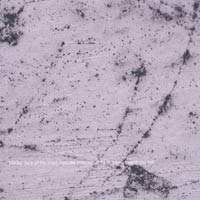
take all the ships from the harbour and sail them straight into hell : 23five : 2009
Oscillation, metal scraping on metal, dragged, large space, little sounds, pushing and pulling, drawing sounds from a well, giving way to a larger atmosphere, looks upwards, the movements made in the space, following ears and eyes, sense of touch, crunching and crackling, ebbs and flows, capturing dead industry, utilising abnormal machinery, thousands of automatons, mechanical insects, strata of life, the industry and the soil, breeds intrigue, 7:07, gives way to gradual silence, the reverberation of fricative liquids and solids, what has been, starts up, as if the mechanical insects are building from scratch the sounds of the distant sea, playing derelict objects, creating imagery that conjures their original purpose, beautiful hyperbolic crackles, 10:10, white noise, a switch to real insects, are they insects? Evolution of sound material, insects oscillating like drones reminiscent of the discs commencement, entomophobia, tunnels, passed out, miasma, life above, next layer, clamour of the upper levels seeping onto your skull, down the indented walls, are sounds coming towards you or are you going towards the sounds? Reoccurring crunching, heard with your eyes, realignment, looking up, again an open manhole cover, sparks of electricity hitting the dead concrete, what is the equivalent auditory terminology of a silent film? Relief 21:24, auditory storyboard, light, humorous, head sinking into a record player, intensely natural transition, each facet of each atmosphere is so real, so much so, it becomes harder and harder to quiet your mind, the thousands of imagistic unions. Album cover acts as a graphic score. Wind drenched landscape, recorded through a bottle, through a wall, a vacuum, the outside world heard through a beehive, inside out, complementarity, ectosymbiosis, felt through the senses of bacteria, auditory ecotone, saline meets fresh, attracting new life, ancient vessels rotting inside the whale, hulls rubbing against its rib bones, the blow hole of the whale creating a cyclic push and pull, enhancing the decay and rot, infrasound made audible, croaking beams, vast unseen patterns, microcosm of said images returning overhead, positive feedback, a fugue of micro and macro, each continually altering the others perspective, 37:02, torrential rain ends the story, drowning out all traces, leaving no remnants, an empty stomach to be filled with pistol shrimp, filters, a flock of birds heard through a wooden leg, temperature ebbs, ravenous birds dig at your feet, slowly engulfing. Listening through a tube whilst inside a tube, auditory retraction, cymatics, shapes form inside the tubes, sharp, a mended ear, feedback system, correlating information all over a series of circuits, receive as soon as send as soon as receive until such meanings are non-existent, roofs of the circuit in flux, naive realism, everywhere at once, vacant estates, drawing breath, a slow night, enclosed in a box, no ears, lead snow.
Patrick Farmer, Bagatellen August 2009
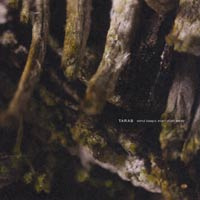
wind keeps even dust away : 23five : 2007
Tarab has worked on the fringes of Melbourne's experimental sound world for several years now. He aims in his work to "recreate the interior environments which occur through our interaction with the commonplace and often overlooked." Wind Keeps Even Dust Away, whose five tracks take their titles from the five words of the album title's proposition, certainly has an undeniable, almost queasy sense of interiority. Despite ostensible stasis, its feeling of a great, broody particle mass shifting about, there's an underlying, sweeping motion to "Even" in particular which is so strong as to get right inside the head of the listener and inculcate that lurching, spinning feeling you get when you're about to be sick from alcohol. Imagine, however, if you can a rather more pleasing and edifying version of that feeling -- a cleverly particular take on the details and dynamics of electronic motion.
David Stubbs. The Wire. Issue 280, June 2007

surfacedrift : naturestrip : 2004
Surfacedrift is the impressive debut album for Melbourne's Eamon Sprod who has adopted the moniker Tarab for his explorations of field recordings coupled with found object improvisation. Each of the four lengthy tracks maps out a psychogeography through sound, specifying the intimate details of these environments and accentuating the pre-existing natural elements with sympathetic textures performed by Sprod. Most of the time, Sprod's hand which can be heard rustling leaves or dragging objects through gravel is perfectly attuned to the natural settings, as to render his own scrablings almost indistinguishable from his recordings of wind violently creaking door hinges, waves lapping at coastal boulders, and rainwater spewing out of a clogged gutter. Where the boundaries between what is natural and performative are elusive at best on Surfacedrift, Sprod's compositional wandering through his complex spaces recalls intuitive collaging of material found in Francisco Lopez' epic La Selva and Chris Watson's Weather Report.

